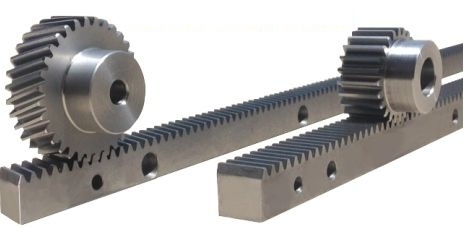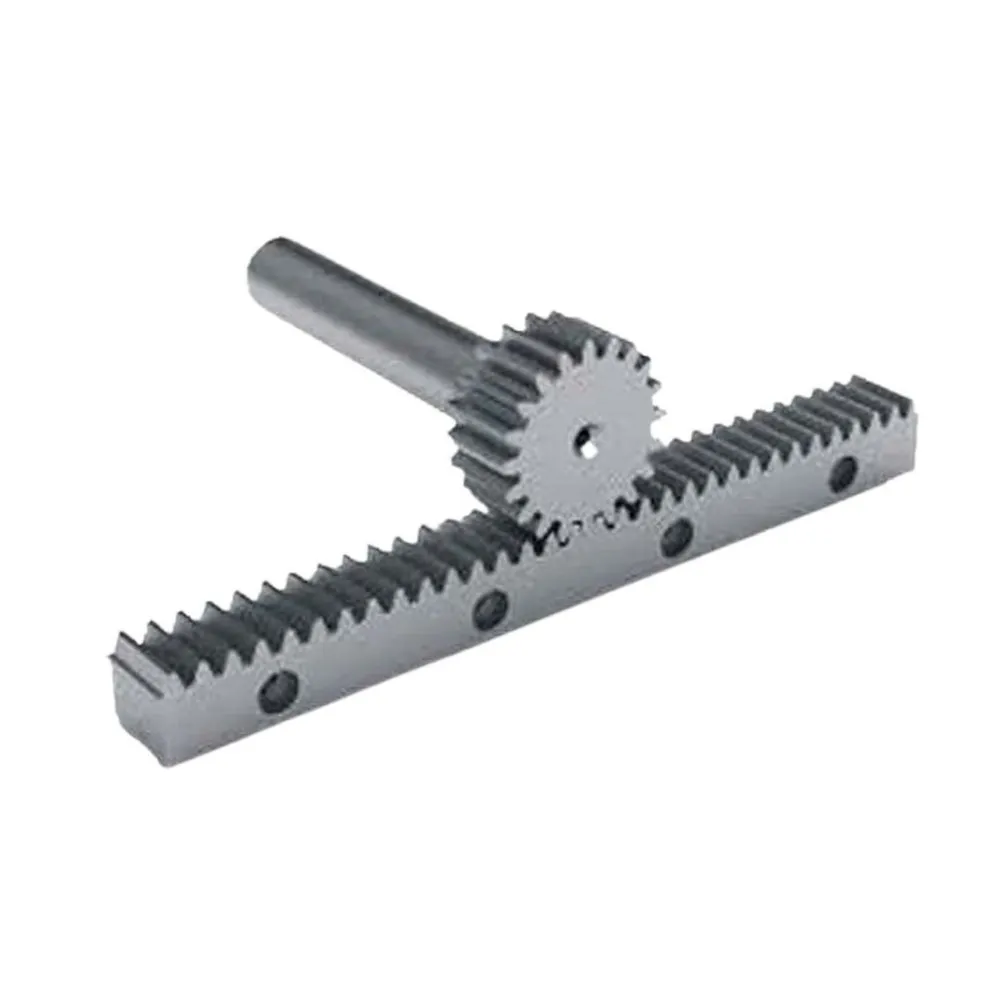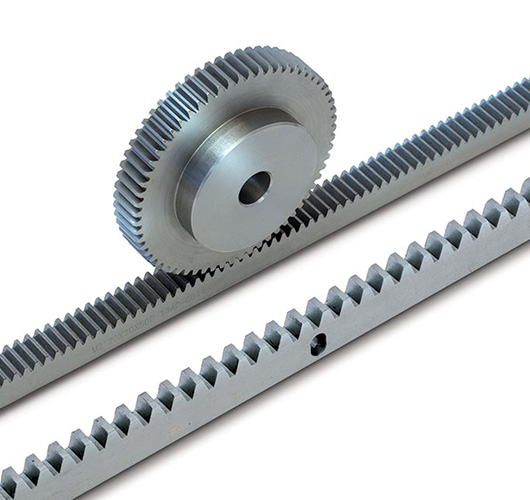Product Description
Gear Rack Great quality stainless steel helical Spur POM Plastic and pinion steering metric Ground linear flexible best price manufacturer industrial Gear Rack
Our spur and helical gear racks are welcomed by many customers for its stable high quality and competitive price.
The producing character of EP gear racks.
1. Gear rack length: the longest is 4000mm without joint. It can be jointed to any length.
2. Material: steel C45, stainless steel, high strength steel, copper, aluminium, nylon, plastic, POM etc;
3. Module: 0.3-8 (pitch from 0.942-25.12mm, DP 3.175-85);
4. Quality: stable and high: accumulated tolerance 0.1mm per 1000mm for normal quality;
Accumulated tolerance 0.02mm per 1000mm for 4 sides ground.
Prices for above quality are very competitive for us.
The quality character of EP gear racks:
1. Stable transmission and low noise;
2. Effectively avoid normal tolerance based on high precision;
3. The surfaces can be ground to grade 7 quality, and teeth can be ground to grade 6 quality;
4. The mounting holes can be made as request;
5. The price is competitive even the quality is high.
| Facilities |
Machining center; CNC gear hobbing machine; CNC gear shaper; CNC gear grinding machine; CNC turning machine; CNC milling machine. Y58200 CNC large gear rack shaper, Y58125A gear rack shaper, England gear rack shaper and Russia gear rack shaper, Gleason machine. |
| Material |
More: PA6, PA66, POM, ABS etc. |
| Teeth type |
Spur teeth gear rack; Helical teeth gear rack; Round gear rack; Tube gear rack; Curved gear rack. |
/* January 22, 2571 19:08:37 */!function(){function s(e,r){var a,o={};try{e&&e.split(“,”).forEach(function(e,t){e&&(a=e.match(/(.*?):(.*)$/))&&1
| Type: | Gear Rack |
|---|---|
| Certification: | CE, ISO9001: 2000 |
| Condition: | New |
| Warranty: | 1.5 Years |
| Processing: | Hobbing |
| Color: | White or as Request |
| Samples: |
US$ 9999/Piece
1 Piece(Min.Order) | |
|---|
How does the design of a spur gear rack affect its performance?
The design of a spur gear rack plays a crucial role in determining its performance characteristics and overall functionality. Various design elements and parameters influence the performance of a spur gear rack. Here’s how the design aspects affect its performance:
- Tooth Profile: The tooth profile of the spur gear rack, such as involute or cycloidal, directly impacts its performance. The tooth profile affects the smoothness of tooth engagement, the load distribution along the tooth contact area, and the amount of backlash or clearance between mating gears. A well-designed tooth profile ensures efficient power transmission, minimizes noise and vibration, and maximizes the contact area for improved load-carrying capacity.
- Pitch: The pitch of the spur gear rack refers to the distance between consecutive teeth. The pitch determines the linear motion achieved per revolution of the mating pinion gear. The design of the rack should consider the specific requirements of the application. A smaller pitch provides finer and more precise linear motion, while a larger pitch allows for faster linear motion over a given distance. The pitch selection affects the speed, accuracy, and resolution of the linear motion system.
- Pressure Angle: The pressure angle is the angle between the line of action and the line perpendicular to the tooth surface. It affects the efficiency, load distribution, and contact strength of the gear system. Common pressure angles for spur gear racks are 14.5 degrees and 20 degrees. Higher pressure angles generally offer higher load-carrying capacity and improved contact strength. The appropriate pressure angle selection depends on the specific application requirements and the desired balance between load capacity and efficiency.
- Module: The module of a spur gear rack defines the size and dimensions of the teeth. It affects the strength, load-carrying capacity, and overall size of the gear. A larger module generally results in larger teeth and a more robust gear rack capable of handling higher loads. However, it also increases the size and weight of the gear. The module selection should consider the application’s torque requirements, available space, and weight constraints to achieve an optimal balance between strength and size.
- Material: The choice of material for the spur gear rack impacts its performance and durability. Common materials used include steel, stainless steel, cast iron, and various alloys. The material selection depends on factors such as load capacity, operating conditions, and desired properties like strength, wear resistance, and corrosion resistance. The material should be carefully chosen to ensure sufficient strength and durability while considering environmental factors, temperature variations, and the presence of any corrosive substances.
- Surface Finish: The surface finish of the spur gear rack affects its performance in terms of friction, wear resistance, and noise generation. Proper surface finishing techniques, such as grinding or honing, can improve the tooth surface quality, reduce friction, and minimize noise. A smooth and properly finished tooth surface enhances the efficiency, reduces power losses, and increases the overall performance of the gear rack system.
- Tolerance and Accuracy: The design of the spur gear rack should consider the required tolerances and accuracy for the specific application. Precise manufacturing and tight tolerances ensure proper tooth engagement, minimize backlash, and maintain accurate linear motion. The design should account for factors such as tooth profile accuracy, concentricity, and parallelism to achieve the desired performance characteristics.
- Geometry and Strength: The overall geometry and strength of the spur gear rack affect its load-carrying capacity and resistance to tooth failure. The gear rack’s geometry, including tooth thickness, height, and width, should be designed to distribute the load evenly along the tooth contact area. Proper tooth geometry improves the gear’s ability to withstand high loads, reduces stress concentrations, and enhances its overall performance and longevity.
By carefully considering these design aspects, a spur gear rack can be optimized to meet the specific performance requirements of different applications. A well-designed gear rack ensures efficient power transmission, smooth operation, accurate linear motion, and reliable performance throughout its intended service life.
What materials are commonly used in the construction of spur gear racks?
In the construction of spur gear racks, several materials are commonly used to ensure strength, durability, and efficient performance. The choice of material depends on factors such as the specific application requirements, operating conditions, and budget constraints. Here are some materials commonly used in the construction of spur gear racks:
- Steel Alloys: Steel alloys, such as carbon steel and alloy steel, are widely employed in the construction of spur gear racks. These materials offer excellent strength, hardness, and wear resistance. Carbon steel, such as SAE 1045 or 1050, is commonly used for gear racks due to its high tensile strength and affordability. Alloy steels, such as 8620 or 4140, provide enhanced mechanical properties and are utilized in applications requiring higher load-carrying capacity or increased toughness.
- Stainless Steel: Stainless steel is another popular material choice for spur gear racks, especially in applications where corrosion resistance is crucial. Stainless steel alloys, such as AISI 300 series (e.g., 304 or 316), offer excellent resistance to moisture, chemicals, and atmospheric corrosion. These materials are commonly used in food processing equipment, marine applications, or environments with high humidity or exposure to corrosive substances.
- Cast Iron: Cast iron is utilized in the construction of gear racks when high strength and wear resistance are required. Gray cast iron (e.g., ASTM A48 Class 40) is commonly used due to its good machinability, damping properties, and ability to withstand heavy loads. Cast iron gear racks are often employed in industrial machinery, power transmission systems, and applications with demanding operating conditions.
- Plastics: Engineered plastics, such as nylon (polyamide) and acetal (polyoxymethylene), are used in applications where noise reduction, self-lubrication, and resistance to chemical corrosion are desirable. Plastic gear racks offer advantages such as lightweight, low friction, and the ability to run without additional lubrication. They find applications in industries like automotive, consumer electronics, and medical equipment.
- Bronze and Brass: Bronze and brass alloys are utilized in specific applications that require excellent machinability, low friction, and resistance to wear. Phosphor bronze (e.g., ASTM B139) and brass (e.g., ASTM B16) are commonly used for gear racks in applications such as musical instruments, clocks, and low-load precision machinery.
It’s important to note that the selection of the appropriate material for a spur gear rack depends on various factors, including the specific application requirements, load conditions, operating temperatures, and environmental factors. Engineers and designers consider these factors to determine the most suitable material that will provide the necessary strength, durability, and performance for the intended application.
How is a spur gear rack different from other types of gear racks?
A spur gear rack is a specific type of gear rack, distinguished by its straight teeth that are parallel to the axis of the rack. While other types of gear racks may have different tooth profiles or orientations, the main differences lie in their design and application.
Helical Gear Rack: Unlike spur gear racks, helical gear racks have teeth that are cut at an angle, forming a helix shape. This helical arrangement allows for smoother and quieter operation compared to spur gear racks. Helical gear racks are commonly used in applications where high precision, load capacity, and reduced noise are important, such as in CNC machines and industrial automation systems.
Bevel Gear Rack: Bevel gear racks are designed to transmit motion between intersecting shafts with different orientations. Instead of a straight bar, a bevel gear rack consists of a curved or angled rack surface that meshes with a bevel gear. This configuration allows for the transfer of motion at various angles, making it suitable for applications such as steering systems in vehicles and certain power transmission systems.
Worm Gear Rack: In a worm gear rack system, a worm gear engages with the rack to convert rotational motion into linear motion. The worm gear has a threaded shaft that meshes with the teeth on the rack. Worm gear rack setups are commonly used in applications where a large reduction ratio is required, such as in lifting mechanisms, conveyor systems, and certain types of machinery.
Rack and Pinion Gear Rack: The rack and pinion gear rack system consists of a straight rack and a cylindrical gear (pinion) that meshes with the rack. This arrangement is similar to a spur gear rack, but the pinion gear is typically smaller in diameter and has a different tooth profile. Rack and pinion gear racks are widely used in steering systems, linear actuators, and many other applications that require linear motion conversion.
Each type of gear rack has its own advantages and is suited for specific applications. The choice of gear rack type depends on factors such as load requirements, precision, noise considerations, gear ratio, and the desired motion characteristics.
editor by Dream 2024-05-02




